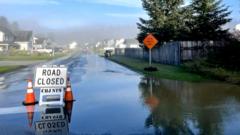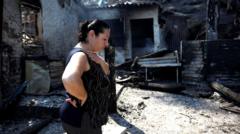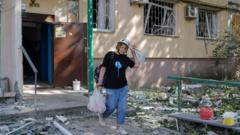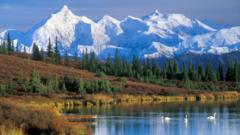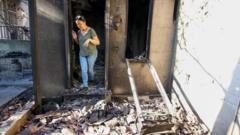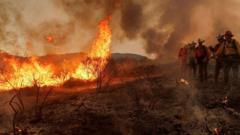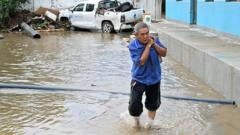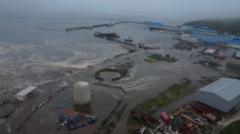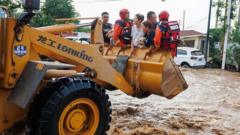As the Mendenhall Glacier's meltwater threatens to overflow into the Mendenhall River, officials in Juneau, Alaska, are evacuating residents and preparing for unprecedented flooding levels. The situation has raised alarms as records may be broken, and local authorities aim to safeguard lives and property.
Alaskan Communities Brace for Potential Catastrophic Flooding
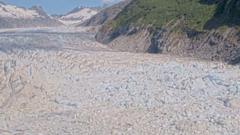
Alaskan Communities Brace for Potential Catastrophic Flooding
Residents in Juneau face the threat of severe flooding following glacial melt, prompting evacuations and a state disaster declaration.
In Juneau, Alaska, evacuations are underway as a significant rise in meltwater threatens to unleash catastrophic flooding. The National Weather Service (NWS) has issued a flood warning as escape of water from a glacial lake dammed by the Mendenhall Glacier poses a growing risk to local homes. Officials have been on high alert in recent days, warning residents of potential evacuation needs as water levels spiked rapidly.
The glacier, which attracts many tourists, is situated 12 miles (19 km) from the capital city. Initially recorded at 9.85 feet (3 meters) on Tuesday, water levels broke the crest on Wednesday, exceeding 16 feet. Meteorologist Nicole Ferrin stated that this could lead to a new record high for the region—an alarming forecast for the affected communities.
The Juneau city administration has provided explanations regarding glacial lake outburst floods (GLOFs), indicating that such incidents occur when a body of water held back by a glacier releases rapidly, a phenomenon likened to unplugging a bathtub. As weather conditions fluctuate, the potential for disaster remains a pressing concern.
In response to the "imminent threat" posed by these developments, Alaska Governor Mike Dunleavy declared a state of disaster last Sunday. The community has faced recurrent flooding issues since 2011, with previous years seeing extensive damage to homes and properties—representing a persistent challenge for residents in the region. The stakes are high as officials scramble to manage the situation and protect vulnerable populations from the looming danger of flooding.

